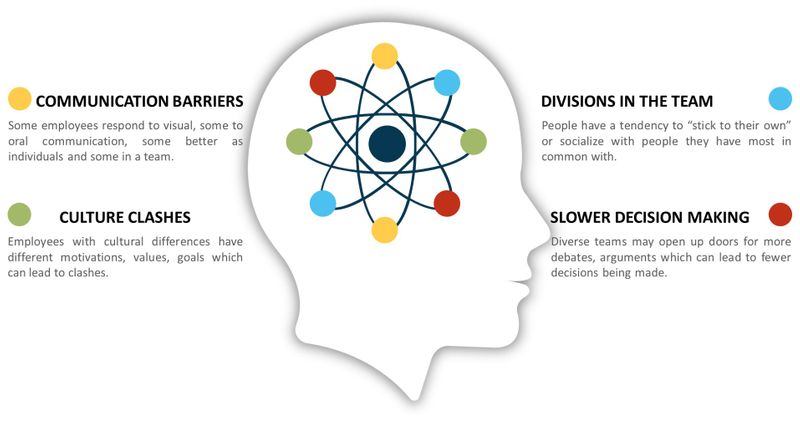
This logo isn't an ad or affiliate link. It's an organization that shares in our mission, and empowered the authors to share their insights in Byte form.
Rumie vets Bytes for compliance with our
Standards.
The organization is responsible for the completeness and reliability of the content.
Learn more
about how Rumie works with partners.
What's the first thing that comes to mind when you think about diversity?
If you're like most people, you might think of characteristics like age, gender, race, or cultural background.
But when it comes to diverse workplaces, there's more to consider than just hiring people who fit into different age brackets or creating the perfect male to female ratio.
The business case for diversity at work is clear: greater productivity and innovation.
So, the question then evolves from “why do we need a diverse team?” to “how can we build a diverse team?”
Let's Talk About Challenges
If it was easy, all of our workplaces would be diverse and collaborative. But there are a lot of challenges that stand in the way.
 So how can you overcome these challenges as a leader?
So how can you overcome these challenges as a leader?
Key Strategies To Manage Diversity
Diverse teams that are successful welcome and value folks of all different backgrounds. They prioritize making team members feel comfortable to contribute.
To achieve this as a manager, you can:
Create ongoing feedback systems
Pursue learning and development opportunities like unconscious bias, conflict mediation, and cross-cultural coaches
Focus on soft skills like emotional intelligence and self-awareness
Practice empathy
Look for opportunities to learn more about different cultures

Quiz
Dani wants to create a more inclusive team. Which of these would be a good approach for her to take?
All of these approaches will help Dani to become more socially aware herself and create a more inclusive team that makes all folks feel welcomed, seen, and valued.
Having "Courageous Conversations" Within Diverse Teams
Sometimes, we run into tense moments at work.
You hear a joke or comment that is disrespectful, or
You feel uncomfortable because of differences with a team member.
These tense moments are opportunities to initiate a courageous conversation to build understanding.
In these situations:
Manage your feelings. Acknowledge what comes up for you and collect your thoughts before starting the conversation.
Use respectful phrases to start the dialogue like “I’d like to understand,” or “Do you have a minute to talk about that?” Then share what you’re feeling using "I" statements.
Listen with curiosity to the other person’s point of view. Seek to understand their viewpoint, and see if you can find a way to reach a mutual understanding.
 Photo by Amy Hirschi on Unsplash
Photo by Amy Hirschi on UnsplashDid you know?
Take Action
Which of these approaches makes sense for your team?
Focus on that area for the next 60 days. Hold yourself accountable by sharing your plan with a partner, friend, or colleague.
This Byte has been authored by
Sukriti Babbar
Applying design thinking at the heart of L&D